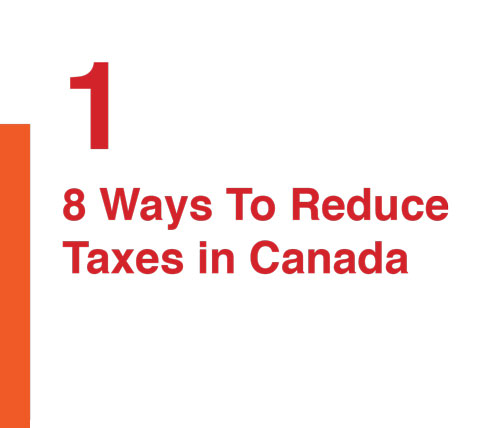
1. Donation Tax Credit
You can accumulate donations and claim them in the same year to receive a higher tax credit. Also, you can combine donations with your spouse’s on a single tax return.
2. Accounting Fees
The accounting fees paid may be deducted from investment income, rental income, or business income reported on your tax return. In all other cases, accounting fees are non-deductible.
3. Salesperson’s Expenses
Expenses are deductible under the condition that they were incurred for the purpose of earning a commission income.
4. Vehicle Expenses
If you are required to use your personal vehicle for work, certain expenses can be deducted. Only the business use of your vehicle can be deducted on your income tax return.
5. RRSP
Contributions made to an RRSP are deductible from your income. The maximum amount that can be contributed in 2019 is $26,500. Any income earned inside an RRSP is tax-free.


However, withdrawals from an RRSP are taxable to you.
6. TFSA
A Tax-Free Savings Account is an account in which any investment income earned is not subject to income tax. Contributions are non-deductible.
7. Spousal Loan
Making a spousal loan to a spouse who is in a lower income tax bracket is an excellent way to take advantage of income splitting in Canada.
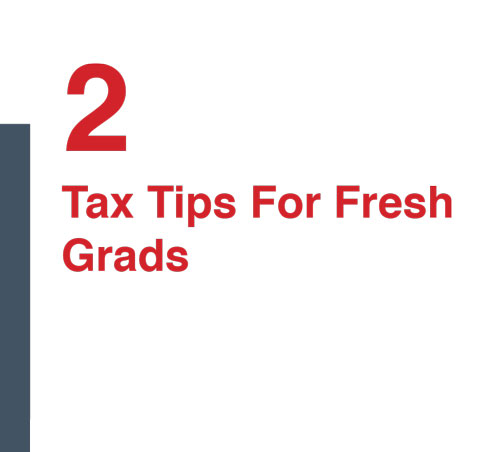
If you have just finished school, and are just starting out your professional life, you might be wondering what tax strategies and credits you should take advantage of. There are some basic things you should consider:
1. Tuition Tax Credit
There is a tuition credit for the amount of tuition paid. When you’re a student, you usually don’t have enough income to use the full credit. Any unused tuition credits are carried forward and can still be claimed in future years.
2. Student Loan Interest Credit
Maybe you haven’t paid your tuition; perhaps you have student loans instead. There are also tax credits you can take advantage of from your student loans. The interest owed on student loans is eligible for credit and can lower the amount of your income tax.
3. Employment Expenses
Sometimes, you have certain employment expenses that are necessary in order for you to perform your job duties, such as supplies, uniforms, car expenses or home office costs, these are tax deductible.


So Here’s the Tip:
If you just finished school, make sure you take advantage of the tuition credits that are available to you. If you pay interest on student loans, there is also a tax credit. In addition, remember to claim your transit passes and employment expenses to reduce your tax bill.
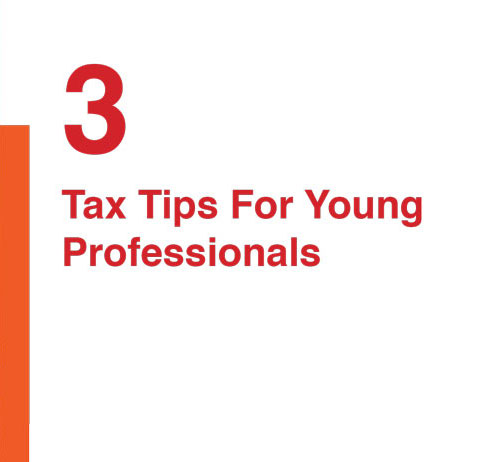
Are you a young professional that’s just starting to handle your own finances? Here are some essential tips you should consider with regards to your first big investments.
How Do You Plan on Saving Your Pay Cheques for Retirement?
When you have a steady flow of income, make sure to put a portion of it away for when you retire. The first financial investment you make, once you start earning should be a registered retirement savings plan. You might think “I could just be putting my money in a savings account, why do I need an RRSP?” An RRSP would be beneficial because the amount you contribute is tax-deductible, at 18% of your prior year’s earnings or a maximum of $26,500 (2019), whichever is lower.
Your First Big Purchase as a Young Professional
For most people, it’s either buying a car or a home. The first thing most young professionals think to buy when making more money is a new car. But what if, you could buy your first home sooner if you postponed buying a car? Instead of buying a car, put your money towards your first home or mutual funds. A car is not an investment.


Buying Your First Home
When buying your first home, consider the home buyers plan. This plan allows you to borrow up to $35,000, tax-free from your RRSP savings. Without the home buyers plan, you would have to pay tax on the amount that you take out from your RRSP. Be mindful that you are only borrowing the money, you would still need to pay it back into your RRSP.
So Here’s the Tip:
Once you are able to, make sure the first thing you invest in is a registered retirement savings plan. It is not only beneficial for retirement, but also for buying your first home.
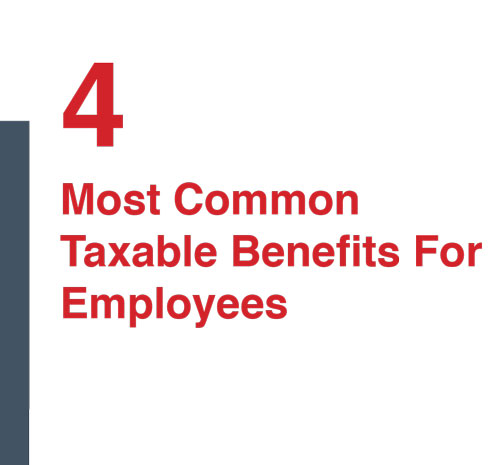
If you have a job and are concerned about paying too much in taxes then this article and video is for you. There are two common taxable benefits that are provided by employers to employees.
Benefit 1: Company Car
One of the most common taxable benefits for employees derives from a vehicle that the company either owns or leases. This is known as the standby charge, an imputed benefit to you, the employee merely because you have access to a company vehicle. The amount of the standby charge should be reported on your T1 tax return, T4 slip, and you will have to pay tax on this amount.
Want to Reduce the Standby Charge?
There are two methods to reduce this charge. The first way is to ask your employer to provide you with a less expensive vehicle. The second option is to reduce the number of personal kilometers that you drive the company car.


Benefit 2: Free Home Internet Access & Company Cell Phone
In the digital age where almost everyone has a cellphone, the government does provide some tax relief. This taxable benefit is equal to the portion of the cell phone and Internet bills that are related to personal use. If an employee goes over their monthly fixed limit, there will not be an additional taxable benefit for the employee.
So Here’s the Tip:
Before accepting a car, cell phone, or free Internet, consider the taxable benefits that will be included on your tax return.
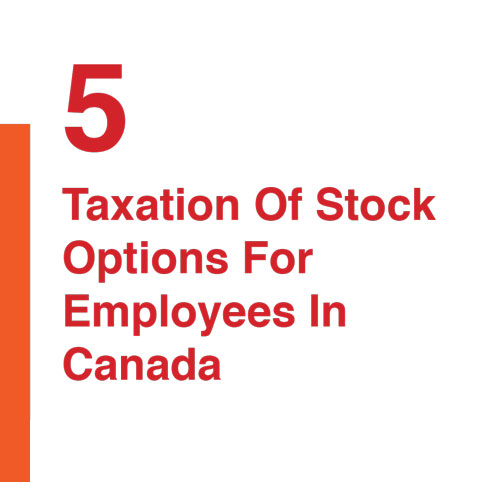
Did you receive stock options from your Canadian employer? If yes, then it’s highly recommended that you go over the points in this article and video.
What is a stock option?
An employee stock option is an arrangement where the employer gives an employee the right to buy shares in the company in which they work usually at a discounted price specified by the employer.
CCPCs (Canadian Controlled Private Corporations) – Employee Stock Options
A CCPC is a company that’s incorporated in Canada, whose shares are owned by Canadian residents. By definition, a CCPC is a ‘private company’ and is therefore not listed on a public stock exchange like the New York Stock Exchange or the Toronto Stock Exchange.
When your employer grants or gives a stock option to you, you do not have to include anything in your taxable income at that time. In other words, there is no tax consequence to you at the grant date.


Public Companies – Employee Stock Options
Now, let’s move on to the taxation of stock options for public companies.
On the date that you are granted or receive stock options from an employer that is a publicly listed company, you do not have a personal tax consequence. However, on the date that you purchase the shares, you will get a taxable benefit equal to the difference between the exercise price of the shares and the market value of the shares on that date. You cannot postpone the timing of this taxable benefit.
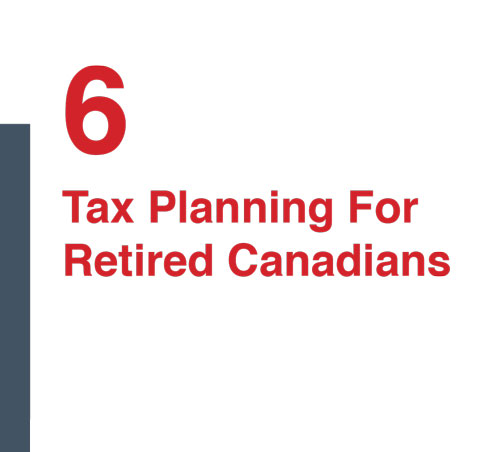
Are you in the luxurious period of retirement? Have you started planning for it? If not, I have helpful tax tips for people who are retired or planning on retiring.
Using the Pension Income Tax Credit
When it comes to tax planning for retirees, this tip is ideal for anyone over 55 years of age. If you fall in this bracket, you can receive a tax credit of up to $2,000, or your pension income amount, if it is lower. This can save you $400 or more, per year, in taxes. Pension income includes the following:
- Annuity income out of an RRSP or a deferred profit sharing plan
- Income from a registered retirement income fund
- Income from foreign pensions
If you are 65 years or older, this tax credit can be claimed at the end of the tax year and if your income is less than $78,000.
Split Your Retirement Pension
You and your spouse can apply to receive equal shares of your Canadian pension plan income that was earned. Essentially, this is beneficial if one spouse is in a higher tax bracket than the other. As a result, you will


be saving a lot in taxes. The only condition is that both partners must be residents of Canada.
Using the Registered Retirement Income Fund
The registered retirement income fund is an extension of your RRSP. When you turn 71, the RRSP has to be converted into a RRIF, a registered retirement income fund. As part of a tax planning approach for retirees, you can use your RRIF to withdraw money and fund your retirement lifestyle.
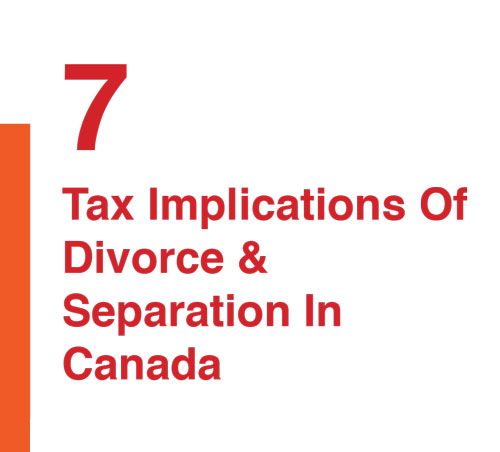
Divorce and separation can be an extremely emotional and difficult time in your life. To make matters worse, these life changes can lead to unwanted financial stress. Nevertheless, there are various tax saving opportunities that can help save you money throughout your marital transition.
1. Split Your Family Assets
You should consider the after-tax cost of family assets when splitting them up upon separation or divorce.
2. Do Not Cash in RRSPs
Do not cash in your RRSPs when splitting your family assets. There is a special rule in the Income Tax Act that allows one spouse to transfer their RRSP to the other spouse upon separation or divorce. This is very helpful if you have to make an equalization payment to your spouse.
3. Update the CRA with Your New Marital Status
If you have children, it is important to update the CRA on your new marital status after you have been separated or divorced. The Canada Child Benefits that you receive for your children is based on family income; this includes the combined income of you and your spouse.


4. Split Your Property Ownership
If you and your spouse own two properties together, then allocate one property to each of you. As a result, each spouse can separately claim the principal residence exemption.
5. Certain Legal Fees Are Tax Deductible
If you have to pay legal fees to your lawyer to collect support payments, then those legal fees are tax deductible on your personal tax return. However, legal fees paid to your lawyer to prepare a separation agreement or for disputes going back and forth on the split-up of family assets are non-tax deductible.
6. Claim the Eligible Dependent Tax Credit
If you have children through joint custody, then decide which spouse will get to claim this credit. Both spouses cannot claim the credit.
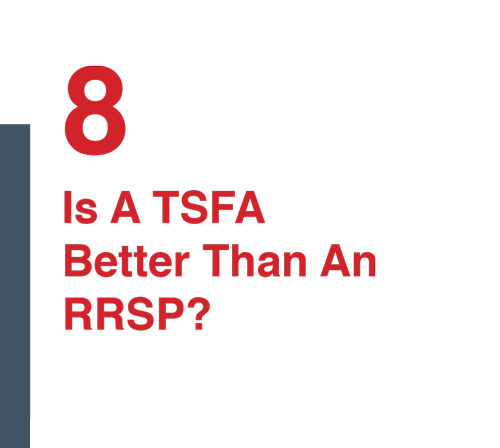
Have you ever wondered whether it’s better to invest in a TFSA or an RRSP? As a Chartered Accountant in Toronto, I’m here to help you evaluate the pros and cons of each, so you can make a more informed decision.
TFSA
The Tax-Free Savings Account (TFSA) was introduced by the Canadian government on January 2, 2009.
The tax attributes of a TFSA are as follows:
- Any income or gains earned inside the TFSA are not taxable
- Withdrawals from a TFSA are not taxable to you
- If you withdraw an amount from a TFSA, you can contribute that amount again to the TFSA
- You can contribute up to $6,000 to a TFSA per year and any unused contribution room carries forward to the next year
- You do not receive a tax deduction for amounts contributed to a TFSA
Canadians are very familiar with Registered Retirement Savings Plans (RRSP), as they have existed for a number of years now.


RRSP
The tax attributes of an RRSP are as follows:
- Any income or gains earned inside the RRSP are not taxable
- Withdrawals from an RRSP are taxable to you
- If you withdraw an amount from a TFSA, you cannot contribute that amount again to an RRSP.
You can contribute up 18% of your prior year’s earned income to a maximum of $26,500 to an RRSP and any unused contribution room carries forward to the next year. You receive a tax deduction for amounts contributed to an RRSP.

When personal tax filing season is just around the corner, it is essential that you avoid these five pitfalls when you are preparing your personal taxes.
1. Do not forget to claim a tax credit for your medical expenses. This is one of the most missed tax credits every single year. So don’t forget to gather your medical receipts for prescription drugs, visits to your doctor, dental treatments and prescription lenses among others.
2. Do not claim moving expenses just because you moved closer to your new place of employment. To qualify for a tax deduction for moving expenses, you must have moved 40 KM closer to your new workplace.
3. Do not throw away your tax receipts. While you do not have to submit your receipts to the CRA if you electronically file your tax return you still have to keep your receipts in case the CRA asks to see them, or in the event of an audit.
4. Tax laws change every single year, and you need to be aware of which changes will affect you. To do this, visit the CRA website to see the new tax deductions and credits for the year.


5. Even if you have no income or very little income in the year, still file a tax return. This is because you are eligible to receive refundable tax credits only if a tax return is filed for the year, such as the Canada Child Benefit or the GST/HST tax credit.
So Here’s the Tip:
Avoid these five pitfalls while filing your taxes this year.
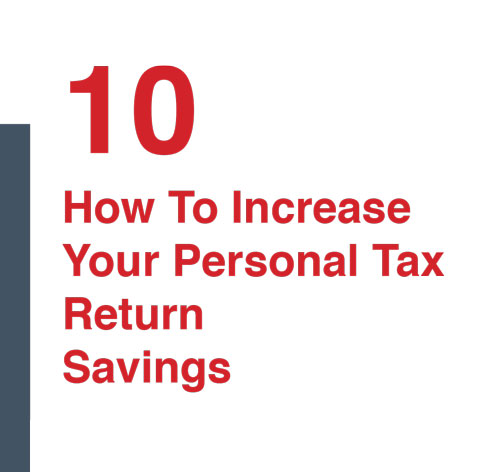
Do you want to know how to increase your personal return tax savings? This article discusses how to save taxes on your Canadian personal tax return.
Contribute to your RRSP
RRSP contributions are tax deductible and any income earned inside your RRSP is tax- free. The 2019 maximum RRSP contribution limit is $26,500. To find out your specific 2019 RRSP limit, either call the CRA at 1800 959 8281 or check your 2019 notice of assessment.
Take Advantage of Tax Credits for the Kids
The second amongst the top five ways to save taxes on your 2019 T1 is to take advantage of tax credits for kids
File your 2019 Tax Return on Time
The filing deadline for the 2019 tax year is April 30th, 2020. If you miss this deadline you will be paying a penalty of 5% on the balance owing plus 1% of the balance owing for each month that the tax return is past due.


Deduct Carrying Charges
Fees paid to a financial advisor and interest paid on an investment loan are tax deductible.
Write-off Employment Expenses
Common examples of employment expenses are:
- Money spent on your car (related to work)
- Money spent on your home office
- Expenses for cell phone charges and internet.
About the Author

Allan Madan is a CPA, CA, and international tax expert. He is a graduate of the University of Waterloo where he earned a Masters Degree in accounting. He enjoys working with business owners, entrepreneurs and individuals. Allan has over 10 years of experience in public accounting. Prior to founding Madan Chartered Accountant in Mississauga, he worked for the Deloitte firm where he was the International Tax Manager. He has completed Parts 1 and 2 of the Canadian In Depth Tax Course, which is the most comprehensive tax training in Canada.
About the Company

At Madan Chartered Accountant, we know how important the experience is. We also know how critical it is to have someone in your corner that knows your unique situation. Your taxes are important to us, because they are important to you. Our knowledgeable and friendly staff will always take the time to go the extra mile. Among all the accounting firms in Mississuga, we’re special. Our unique size enables us to answer the most complex of problems, yet provide personal attention to all our clients.
Contact Us:
Address:
145 Traders Boulevard East, Unit 20
Mississauga, ON L4Z 3L3
Phone: (905) 268-0150
© 2018 Madan Chartered Accountant Professional Corporation. All Rights Reserved.
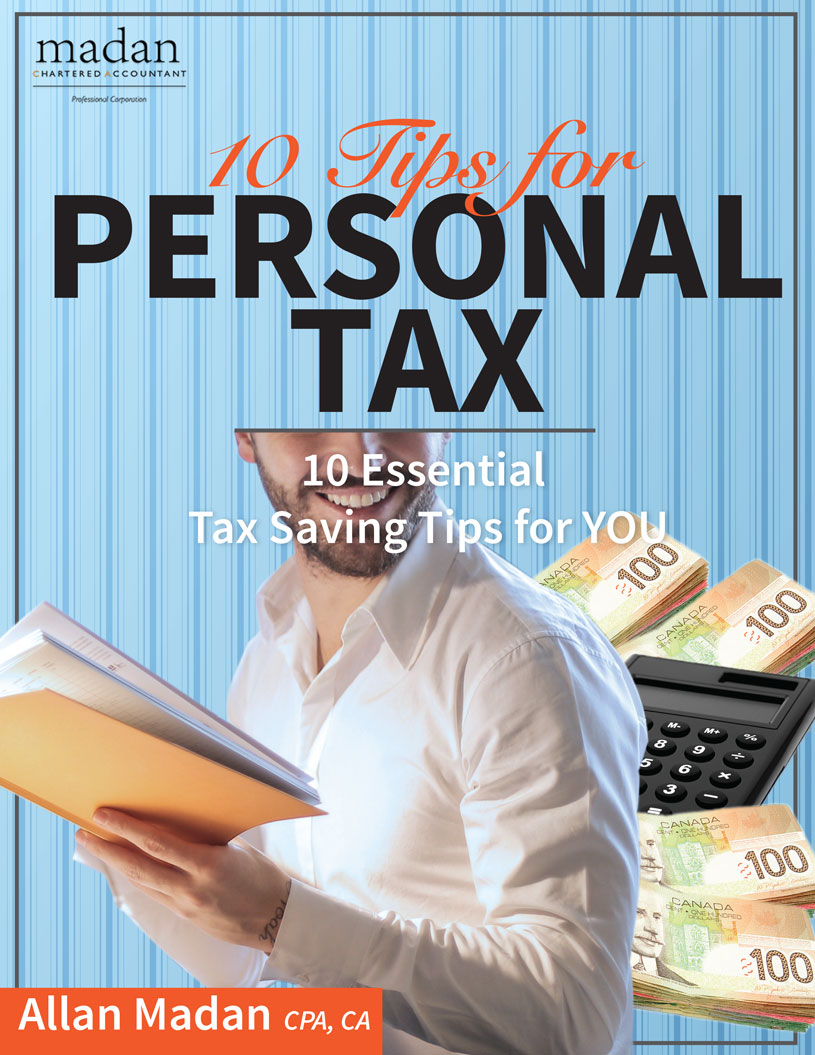
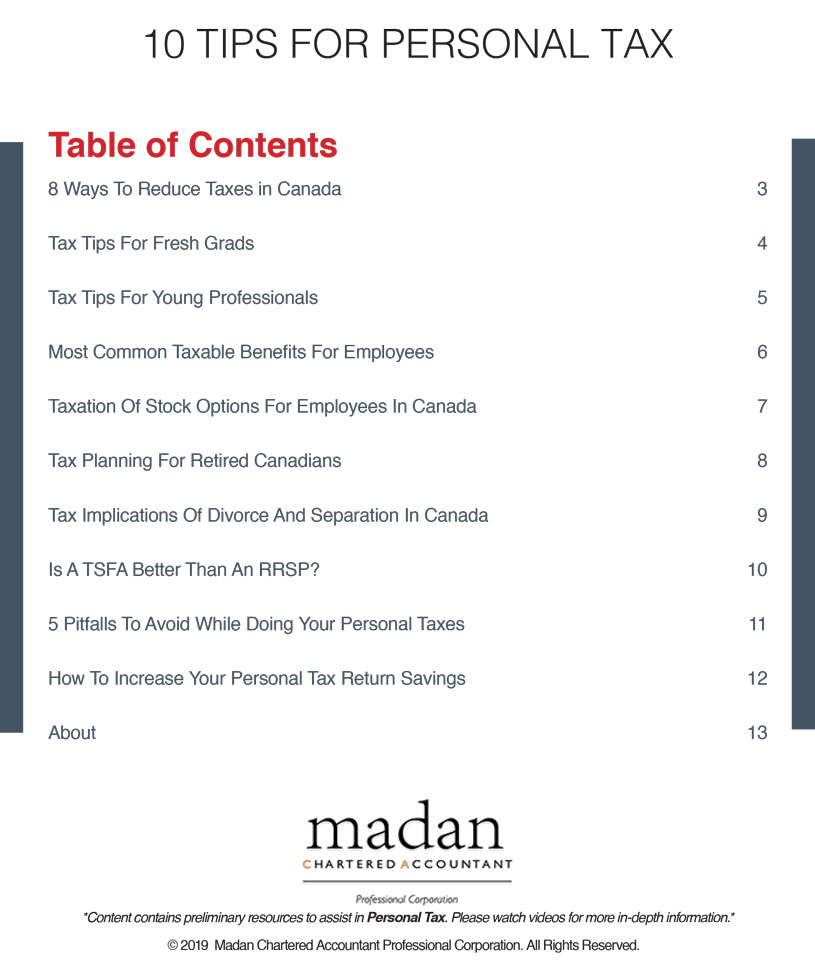

SOCIAL CONNECT